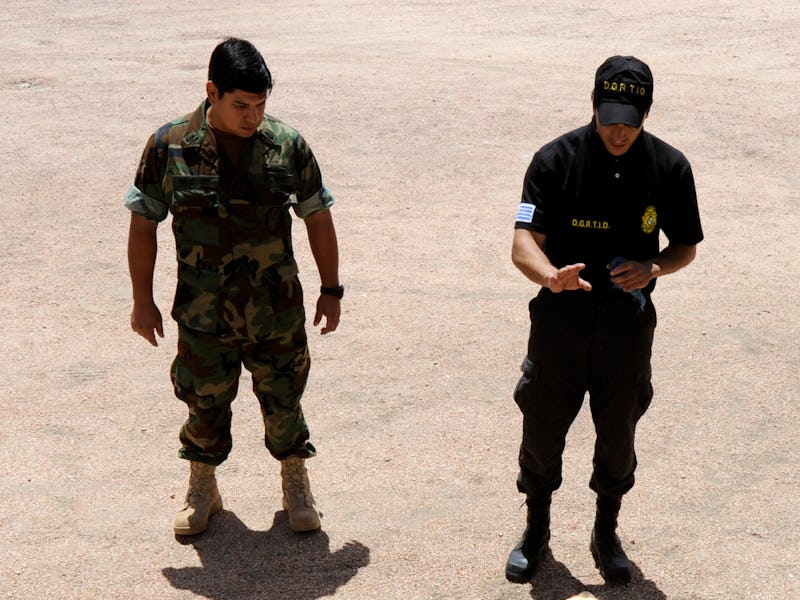Is Your "Good Dog" Good Enough to Sniff Out USB Drives? (Probably Not.)
Unless your dog is a Labrador retriever, maybe.

Dogs always be sniffin’. (First prize is a delicious treat.) But only certain dogs are cut out for the intense, crime-scene sniffing required to detect the trace chemical common to all forms of electronic storage equipment, triphenylphosphine oxide, or TPPO. Finding smelly drugs or explosives is one thing, but you need an extremely disciplined dog to find an illicit USB drive.
As Kerry Halligan, a K-9 instructor with the Connecticut State Police, told CNET for the summer issue of their print edition, only about one in every 50 dogs passes the battery of tests required to become an electronic storage detection (ESD) dog.
The whole concept dates back to a 2012 program with the Connecticut State Police. Its computer crimes department wanted to know whether the very capable graduates of its K-9 academy could sniff out thumbdrives.
A chemist at the state’s forensic science laboratory, Jack Hubball (now retired), began tinkering with thumb drives, SD cards, SIM cards, and hard drives looking for substances that a dog might be able to pick up. What Hubball landed on was triphenylphosphine oxide: a molecule that reacts with individual metal atoms, including copper, to form these things called “coordination complexes” whose electrical-conducting properties are an integral part of most memory storage devices.
A Connecticut State Police K-9 searches the underside of an SUV.
One of Hubball’s last projects before retirement was trying to train dogs to detect TPPO “down to very low part-per-million levels,” according to a 2016 interview with Tech Republic.
“My first reaction was a lot of skepticism,” Hubball said at the time. “But I’ve worked with arson, drug, and bomb units for over 30 years, so I have a lot of faith in the dogs, and a lot of knowledge about what their capabilities were.”
Why We Teach Good Dogs to Be Even Better
You can’t fight 21st Century crime without tech-sniffing police dogs. It was an ESD dog named Bear who found ex-Subway spokesman Jared Fogle’s hidden thumb drive of child pornography in 2015, ending an eight-year-long investigation and leading to Fogle’s conviction later that year. Bear, a black Lab, was also involved in the investigation of Olympics gymnastics coach Marvin Sharp, according to NBC News.
The dogs are also used in California prisons, where thousands of contraband cell phones are found and removed each year through the efforts of cell phone-sniffing dogs, according to reporting by the Marshall Project.
Of course, you also can’t just pull any mangy mutt off the street to become one of these elite gadget hounds. They’ve got to be dedicated to their work like Al Poochino’s character in the 1995 crime drama Heat.
According to officials with the Connecticut State Police, Labrador retrievers have proven to be the most reliable — but not simply because of their sense of smell. In recent years, in fact, scientists in Hungary and Finland have made a persuasive case that the Lab’s olfactory abilities are somewhere below a German Shepherd’s. But the secret to USB-sniffing labs have less to do with their noses than their bellies: They’re simply hungry all the time, which makes them incredibly easy to train and ready at a moment’s notice to sniff out some hardware.
All detection dogs are trained to associate the scent they are looking for with a food reward, which means that from the beginning of their training to their last day on the force these dogs are not fed until they smell evidence of their target and point it out. For drug- and bomb-sniffing dogs, this can be incredibly inconvenient for their handlers, who have to carry around and hide contraband materials on a daily basis as a training exercise that precedes mealtimes.
What that means is that you won’t get a reliable tech tracker if they’re not thinking about their next meal 24/7, which is what makes Labs so perfect for the role.
“She is so food-driven,” Hochron says, “that I could feed her a can right now, and she could still work an hour later.”